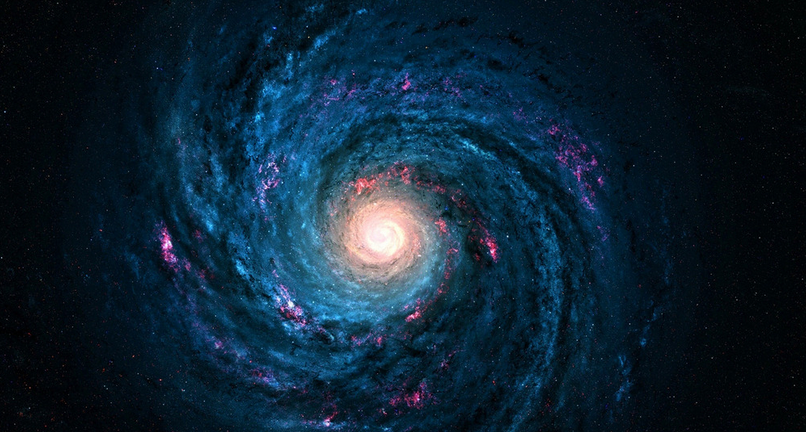“我想,这还是挺令人满意的啊,”埃文斯说,“想一想,那个光在太空里走了几百万年,抵达地球的时候恰好有个人在不偏不倚地望着那片天空,结果看到了它。能亲眼目睹这样一个重大事件,这似乎是挺不错的。”
Supernovae do much more than simply impart a sense of wonder. They come in several types(one of them discovered by Evans) and of these one in particular, known as a Ia supernova, isimportant to astronomy because it always explodes in the same way, with the same criticalmass. For this reason it can be used as a standard candle to measure the expansion rate ofthe universe.
超新星远远不止让你产生一种惊奇感。它们分为几种类型(有一种是埃文斯发现的),其中之一名叫Ia超新星,它对天文学来说尤其重要,因为这类超新星总是以同样的方式爆炸,拥有同样关键的质量。因此,它们可以被用做“标准烛光”--用来衡量其他恒星的亮度(因此也是衡量相对距离)的标准,从而衡量宇宙的膨胀率。

In 1987 Saul Perlmutter at the Lawrence Berkeley lab in California, needing more Ia supernovaethan visual sightings were providing, set out to find a more systematic method of searching forthem. Perlmutter devised a nifty system using sophisticated computers and charge-coupleddevices—in essence, really good digital cameras. It automated supernova hunting. Telescopescould now take thousands of pictures and let a computer detect the telltale bright spots thatmarked a supernova explosion.
1987年,由于需要比目测所能提供的更多的超新星数目,加利福尼亚州劳伦斯·伯克利实验室的索尔•珀尔马特开始寻找一种更加系统的搜寻方法。珀尔马特利用先进的计算机和电荷耦合器件设计了一个绝妙的系统--实质上是一流的数码相机。它使寻找超新星的工作自动化了。现在,天文望远镜可以拍下几千幅照片,然后利用计算机来发现能够说明发生了超新星爆炸的亮点。
In five years, with the new technique, Perlmutter and his colleagues at Berkeley found forty-two supernovae. Now even amateurs are finding supernovae with charge-coupled devices. "WithCCDs you can aim a telescope at the sky and go watch television," Evans said with a touch ofdismay. "It took all the romance out of it."
在5年时间里,珀尔马特和他的同事们在伯克利利用这种新技术发现了42颗超新星。如今,连业余爱好者也在用电荷耦合器件发现超新星。“使用电荷耦合器件,你可以把天文望远镜瞄准天空,然后走开去看电视,”埃文斯不大高兴地说,“那种神奇的味道已经不复存在了。”
I asked him if he was tempted to adopt the new technology. "Oh, no," he said, "I enjoy my waytoo much. Besides"—he gave a nod at the photo of his latest supernova and smiled—"I can stillbeat them sometimes."
我问埃文斯,他是不是想采取这种新技术。“哦,不,”他说,“我很喜欢自己的办法,而且”,他朝新近拍摄的一幅超新星照片点了点头,微微一笑,“有时候我仍能超过他们。”







